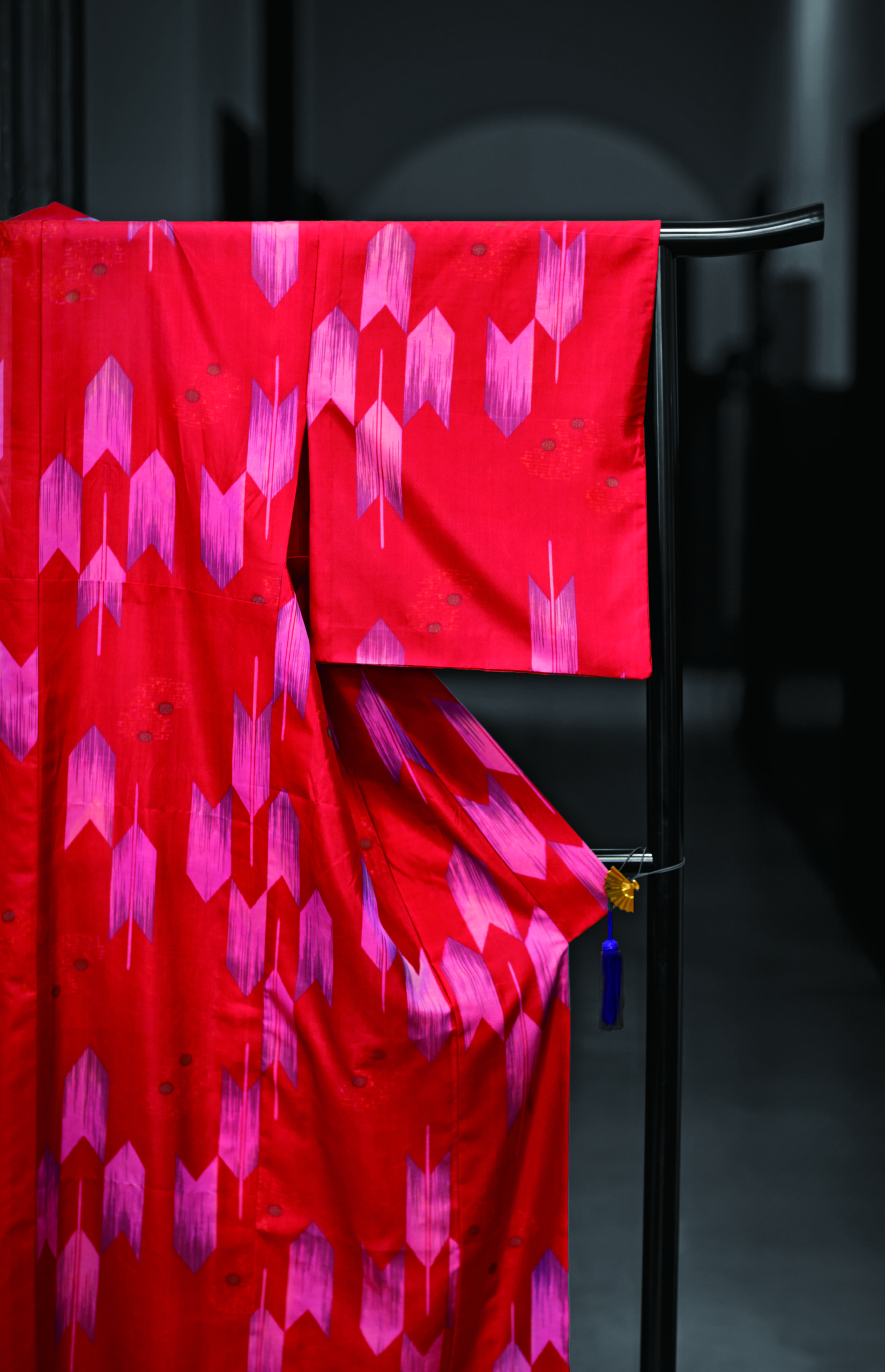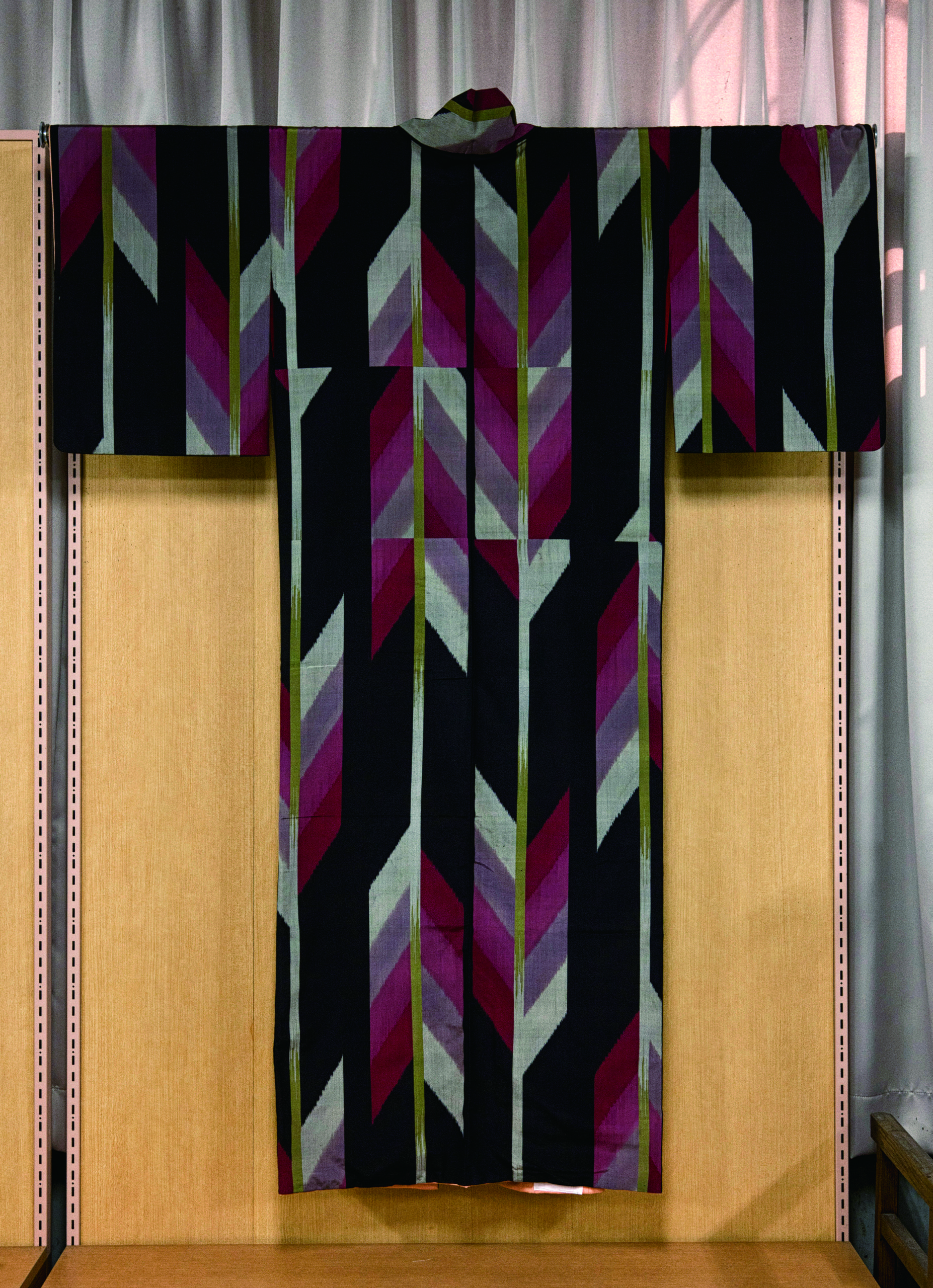秩父銘仙
Pronunciation: Chichibu-meisen
Production area: Chichibu region, Saitama Prefecture
Chichibu-meisen is a silk textile from the Chichibu region of Saitama Prefecture, developed in a mountainous area where weaving traditions flourished. Its unique feature is that the threads are stencil-dyed before weaving, so both sides of the fabric are identically patterned, allowing the cloth to be reused by reversing it when the front side fades. Weaving in Chichibu dates back to ancient times, said to have begun when Chichibu-hiko-no-mikoto introduced sericulture and weaving during the reign of Emperor Sujin (3rd–4th century). By the Kamakura period, textiles were produced for flags, and in the Edo period, sericulture and silk weaving expanded, making the region known for cocoons and raw silk. In the late Meiji era, a unique technique called hogushi-ori (loosely woven warp threads stencil-dyed before final weaving) was developed. This allowed for colorful, modern patterns and made Chichibu-meisen a fashionable and affordable choice for women’s everyday wear. Its popularity peaked nationwide in the early Shōwa period. In 2013, it was designated as a Traditional Craft by the Japanese government.
The “Hogushi Nassen” Technique of Chichibu Meisen
This method, patented in 1908 by Sotaro Sakamoto, involves loosely weaving temporary weft threads into aligned warp threads, stenciling patterns onto them, and then carefully weaving while unraveling the temporary wefts. Because the dye penetrates the threads, both sides of the fabric show the same pattern. Depending on the angle of light, an iridescent “tamamushi” (beetle-wing) effect may also appear.


Photo courtesy ofPhoto courtesy of Tourism Division, Department of Industry and Labor, Saitama Prefecture



















